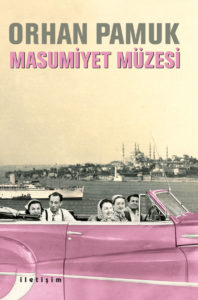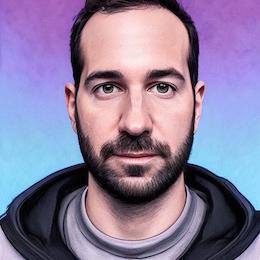
I like 37signals’s opinionated and provocative style, they like to preach the way they work and try to influence others. Remote is their new book on advocating working remotely. The book approaches working remotely both from an employee’s perspective and from a business owner’s perspective. It starts off by advocating the advantages of working remotely, tries to rebut arguments against it, gives tips on working remotely, and explains how to hire and manage remote employees.
I love movies, photos, products or cafes that can create an emotional connection and make me feel in a different way.
This video that tells the story of Street Etiquette blog is one of them. Here’s my favorite quote from the video:
“Best advice, I would say is: Learn the rules and break them.”

Scott Adams, creator of the comic Dilbert, tells his story while offering random assortment of life tips in his book “How to Fail at Almost Everything and Still Win Big: Kind of the Story of My Life”.
A big theme and takeaway from this book was the emphasis on personal energy: “We humans want many things: good health, financial freedom, accomplishment, a great social life, love, sex, recreation, travel, family, career … So how do you organize your limited supply of time to get the best result? I make choices that maximize my personal energy.” It was enlightening to have a framework you can use when making choices. Jeff Bezos’s Regret Minimization Framework is another one that I really like.

I mostly read non-fiction, but every once in a while the fiction lover in me wakes up. “The Little Prince is a book for grown-ups, I don’t recall much from the time I read it as a kid.” I said. “If I read it this time, I will understand it all”, I thought. Oh boy, I have to revisit this book again when I get wiser. It’s a philosophical story that has a lot of criticism about us grown ups.

My long history of exercise has painfully thought me that getting in shape is 70% what you eat and 30% what you do. I’ve done a good job at exercising regularly, but never got around to maintaining a healthy diet. That’s why I decided to read Michael Pollan’s book on nutrition. Food Rules tries to answer three main questions:
- What should I eat?
- What kind of food should I eat?
- How should I eat?
I found the last section to be the most interesting. Here are some tips on how to eat:

Masumiyet Müzesi, “Hayatımın en mutlu anıymış, bilmiyordum. Bilseydim, bu mutluluğu koruyabilir, her şey de bambaşka gelişebilir miydi?” cümlesiyle başlıyor. Hem çok kuvvetli, hem de hüzün dolu bir cümle. Güçlü yanı bir insanın bütün hayatını gözden geçirip en mutlu anını seçebilmesi fikri, üzücü yanı ise o anı yaşarken bunun farkında olmaması. Bu mutluluğu çok güzel tasvir ediyor Orhan Pamuk:
“Çok mutluydum. Ama bu, aklımın ölçerek anladığı bir mutluluk değil, tenimin yaşayarak tanıdığı ve daha sonra sıradan hayatın içinde, bir telefon açarken ensemde, acele acele merdivenleri çıkarken kuyruk sokumumda ya da dört hafta sonra nişanlanmayı kurduğum Sibel ile Taksim’de bir lokantada yemek seçerken göğsümün ucunda hissederek hatırladığım bir şeydi.”

It’s hard to ignore a book written by the COO of the company you work for, especially when you get a signed copy for free. Lean In by Sheryl Sandberg is a book about women in the workforce, mixed with some lessons on careers and success in business. Here are my takeaways:
- When I don’t feel confident, one tactic I’ve learned is that it sometimes helps to fake it. After an hour of forced smiling, I often felt cheerful. One study found that when people assumed a high-power pose for just two minutes, their testosterone went up and their stress hormone levels went down.
- Opportunities are rarely offered, they’re seized.
- Success and likeability are positively correlated for men. A willingness to make an introduction or advocate for or promote someone depends upon having a positive feelings about that person. We want to work with people who are like us.
- Mark Zuckerberg told me that my desire to be liked by everyone would hold me back. He said that when you want to change things, you can’t please everyone. If you do please everyone, you aren’t making enough progress.
- As of 2010, the average american had eleven jobs from the ages of eighteen to forty-six.
- Eric Schmidt explained that only one criterion mattered when picking a job – fast growth. When companies grow quickly, there are more things to do than there are people to do them. “If you’re offered a seat on a rocket ship, you don’t ask what seat. You just get on.”
- The cost of stability is often diminished opportunities for growth. Where risks were great, the potential rewards are even greater.
- Leadership is about making others better as a result of your presence and making sure that impact lasts in your absence.
Reading this book for business lessons was like searching for a needle in a haystack.

Paul Arden’s book is on advertising and motivation. The presentation of this book is as important as the content. It’s optimized for sales: has a catchy title and cover, cheap price, is easy to carry around (small and thin). Content of the book is easy to read and easy to share: big fonts, lots of photos. Here are some highlights:
- Talent helps, but it won’t help you as far as ambition. Everybody wants to be good, but not many people are prepared to make the sacrifices it takes to be great.
- You must develop a complete disregard for where your abilities end. Try to do things that you’re incapable of.
- You will remember from school other students preventing you from seeing their answers by placing their arm around their exercise book or exam paper. Somehow the more you give away the more comes back to you.
- Don’t look for the next opportunity. The one you have in hand is the opportunity.
- If you show him [client] what you want and not what he wants, he’ll say that’s not what he asked for. If, however, you show him what he wants first, he is then relaxed and is prepared to look at what you want to sell him.
- How you perceive yourself is how others will see you. The more strikingly visual your presentation is, the more people will remember it.
- Observe that an organization’s reputation is usually built on one or two key accounts.
Overall, it was a quick motivational read.

Scott Kelby’s “The Digital Photography Book” seems to be the goto reference for those who purchase their first DSLR camera. Even though I don’t have a DSLR camera yet, I was interested in learning more about photography and how to take good photos. This book is organized by use cases: shooting flowers, shooting at weddings, shooting landscapes, shooting sport events and shooting people. It’s very easy to follow, the book consists of several one page tips for each section. Here’s what I learned from reading this book:

The Launch Pad is a book on YCombinator, a seed fund that is mass-producing new startups in Silicon Valley. The book walks us through different stages of the program: applications, interviews, prototype day, rehearsal day and demo day. It gives an insider perspective, featuring what several companies such as MongoHQ, Parse and Rap Genius have gone through during YC Summer 2011 batch. It contains the struggles of companies who had to pivot and come up with new ideas during the program. It’s also a good resource for learning about Paul Graham school of thought on startups. Here are some of the parts I liked:









